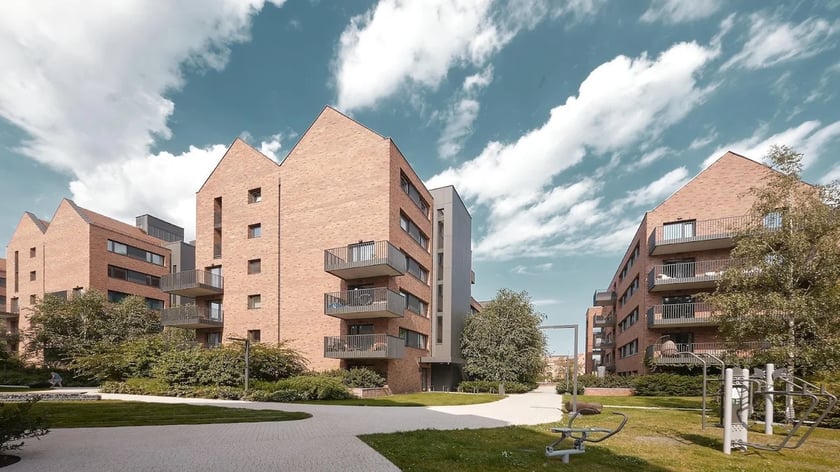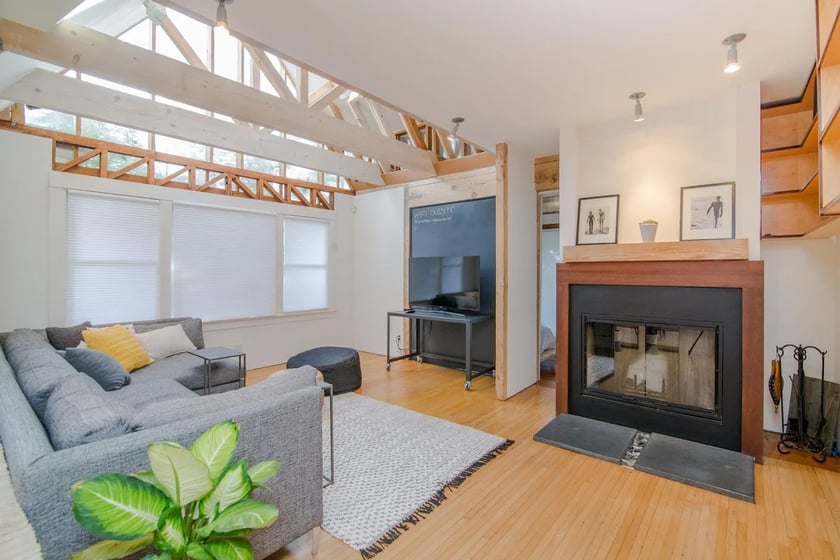4 min read
Everything You Need to Know About Multifamily Investment Strategies
![]() David Schwartz
Jun 16, 2023 4:44:53 AM
David Schwartz
Jun 16, 2023 4:44:53 AM

As an investor or landlord, you want to diversify your property portfolio, and adding a multifamily home or two is a great way to go. These properties can lower vacancy rates while adding to your income. This is why many people have one or more multifamily homes.
But, these homes have a higher price tag, and you may start wondering how to buy a multifamily property with no money. The price shouldn't scare you off, nor should not having the cash to purchase the property. We want you to be successful, so we will tell you everything you need to know about investing in multifamily homes, no matter how much cash you have below.
Related: Green Landlording
Defining a Multifamily Property
Townhomes and apartment buildings are multifamily residences. There are many housing options in this category, but all have two things in common: multiple units and occupying the same premises. Whether you live there or rent out, you'll live in a "multifamily" home. When you rent out half of a duplex and live in the other, you and the tenant live in multifamily residences.
Many new investors find excellent investment opportunities with these properties. Whether renting it as an owner-occupied unit or renting both parts, these properties are excellent tools to help you build wealth.
3 Solid Tips for Investing in Multifamily Properties
Choosing to invest in multifamily real estate is a unique experience when you compare it to having only single-family properties. Before you invest, keep the following tips in mind.
1. Use the 50% Rule
To ensure you generate the most revenue, take time to run the numbers and estimate your earnings as a property owner. You do this by adding the rent, parking fees, and storage revenue, and subtracting any maintenance or repair expenses.
If you don't get price breaks in the neighborhood, use the 50% rule. Divide your expected income by 50% to get your estimated expenses. Next, subtract the estimated monthly expenses from this number. You'll get your NOI or net operating income.
2. Figure Out Your Cash Flow
Add your estimated mortgage payments when you figure out your cash flow. Take your property's NOI and subtract the mortgage payments. This will also give you an investment evaluation, and you can use it to determine if investing in this type of property is worth it.
3. Determine Your Capitalization Rate
To find this rate, multiply your monthly net operating income by 12 and divide the result by the property's market value. Remember that a higher risk and return come with a higher capitalization rate, while a lower risk and return come with a lower capitalization rate. When you invest, you want a rate of between 5% and 10%.
Are you worried about rising utilities in your multifamily property? The Water Scrooge offers a water flow management device to keep your utilities in check.
Key Criteria to Look For With Multifamily Properties

Investing in this type of property means you have to find a property that costs less than the market value, and to do so; you have to consider the following points:
- Costs - Carefully consider every cost involved, including buying the property, renovating it, maintenance, and potential vacancies.
- Location - Ideally, you want your property in thriving areas with a lot of competition for vacancies.
- Number of Units - Balance how much effort you’ll have to put into managing the number of units with the income potential.
- Seller - Figure out why the seller wants to get rid of the property and have a thorough inspection to find any issues with the property.
Comparing Single Family vs. Multifamily Investing
While investing in real estate is very popular, deciding which type of property to buy can be a challenge. We’ll give you the benefits of investing in multifamily properties and single-family homes below.
Single Family Investing Benefits:
- Ease of Management - Managing this type of home can be less time-consuming and easier than a bigger property with multiple units.
- Lower Entry Costs - Purchasing single-family properties are usually less expensive, and this can make them more accessible.
- Market Liquidity - Due to a bigger market with potential buyers, single-family properties typically sell quickly.
Multifamily Investing Benefits:
- Economies of Scale - You can save money on renovation and maintenance costs by having multiple units in one building.
- Growth Opportunities - Multifamily properties can give your portfolio an income and growth boost, making it easier to buy more properties in the future.
- Income Potential - With more than one unit, you'll get a steady income, even if they're not all occupied.
Related: Case Study - Grand Concourse Apartments
Top Five Investing Markets for This Property Type
Location is one of the most significant factors in your purchase's success. Even if you buy an excellent property with modern appliances, tenants may not want it if it's not in a good location. Consider the top five markets below if you want to buy a multifamily property:
- Los Angeles, CA
- Seattle-Tacoma, WA
- Boston, MA
- Minneapolis-St. Paul, MN
- Oakland, CA
Ways to Finance Multifamily Properties
To be successful while investing in real estate, you must understand how to finance it. There are several options available that cater to different situations and needs, and they include the following:
- FHA Loans - The FHA (Federal Housing Administration) has loans with lower down payments, which are great for owner-occupants.
- Hard Money Loans - These short-term, high-interest loans work well for properties you want to renovate and resell quickly.
- Private Money - This category includes friends, family, or private investors. You can typically negotiate the loan terms and interest rates.
- Seller Financing - Some sellers may offer to finance the property, usually requiring a down payment and scheduled payments.
- Traditional Mortgage - Banks and credit unions provide conventional mortgages for investors. They typically require that you have a downpayment and a good credit score.
Successfully Managing Multifamily Properties

Success in managing multifamily properties requires a delicate balance of finance, maintenance, and tenant relations. Make a point to regularly inspect the units and address any necessary repairs quickly to keep your tenants happy and reduce expensive future fixes.
It’s also critical that you collect rent on time and budget carefully. Finally, be open when communicating with your tenants. You may want to consider hiring a professional property manager. But, with careful planning and attention, this can be a lucrative investment.
Are you trying to get a system in place to save water and reduce utility costs while keeping your tenants happy? The Water Scrooge has a range of products to do just that!
Boost Your Multifamily Property Profits With The Water Scrooge
The Water Scrooge helps with multifamily property investment by providing water conservation devices and leak detection services, reducing utility costs, and preventing expensive repairs.
Make your property eco-friendly and increase profits by reducing operating costs with The Water Scrooge. Investing in this sustainable solution means investing in a cost-efficient future for your multifamily properties. Take advantage of conservation to boost your success.

